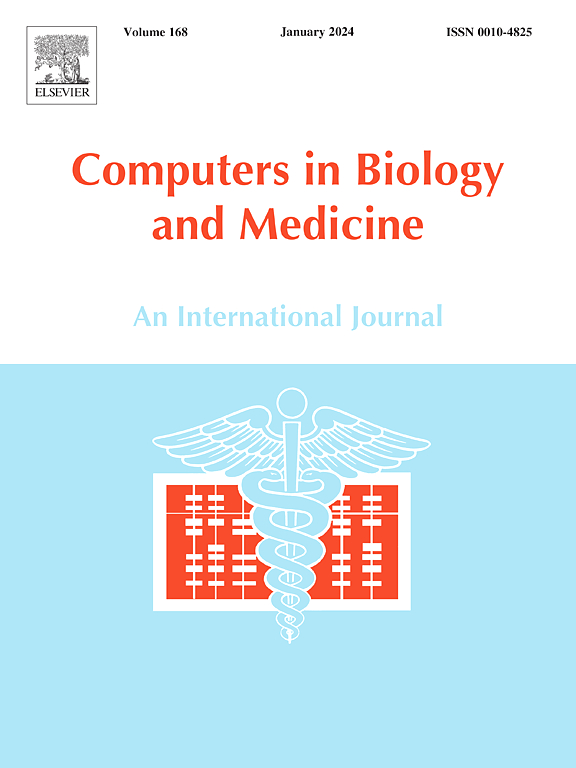Multiclass ensemble framework for enhanced prostate gland Segmentation: Integrating Self-ONN decoders with EfficientNet
IF 7
2区 医学
Q1 BIOLOGY
引用次数: 0
Abstract
Digital pathology relies on the morphological architecture of prostate glands to recognize cancerous tissue. Prostate cancer (PCa) originates in walnut shaped prostate gland in the male reproductive system. Deep learning (DL) pipelines can assist in identifying these regions with advanced segmentation techniques which are effective in diagnosing and treating prostate diseases. This facilitates early detection, targeted biopsy, and accurate treatment planning, ensuring consistent, reproducible results while minimizing human error. Automated segmentation techniques trained on MRI datasets can aid in monitoring disease progression which leads to clinical support by developing patient-specific models for personalized medicine. In this study, we present multiclass segmentation models designed to localize the prostate gland and its zonal regions—specifically the peripheral zone (PZ), transition zone (TZ), and the whole gland—by combining EfficientNetB4 encoders with Self-organized Operational Neural Network (Self-ONN)-based decoders. Traditional convolutional neural networks (CNNs) rely on linear neuron models, which limit their ability to capture the complex dynamics of biological neural systems. In contrast, Operational Neural Networks (ONNs), particularly Self-ONNs, address this limitation by incorporating nonlinear and adaptive operations at the neuron level. We evaluated various encoder-decoder configurations and identified that the combination of an EfficientNet-based encoder with a Self-ONN-based decoder yielded the best performance. To further enhance segmentation accuracy, we employed the STAPLE method to ensemble the top three performing models. Our approach was tested on the large-scale, recently updated PI-CAI Challenge dataset using 5-fold cross-validation, achieving Dice scores of 95.33 % for the whole gland and 92.32 % for the combined PZ and TZ regions. These advanced segmentation techniques significantly improve the quality of PCa diagnosis and treatment, contributing to better patient care and outcomes.
增强前列腺分割的多类集成框架:集成自onn解码器与EfficientNet
数字病理学依靠前列腺的形态结构来识别癌组织。前列腺癌(PCa)起源于男性生殖系统的核桃状前列腺。深度学习(DL)管道可以通过先进的分割技术帮助识别这些区域,从而有效地诊断和治疗前列腺疾病。这有助于早期发现、有针对性的活检和准确的治疗计划,确保结果一致、可重复,同时最大限度地减少人为错误。在MRI数据集上训练的自动分割技术可以帮助监测疾病进展,从而通过开发个性化医疗的患者特异性模型来获得临床支持。在这项研究中,我们提出了多类分割模型,旨在通过结合EfficientNetB4编码器和基于自组织操作神经网络(Self-ONN)的解码器来定位前列腺及其区域,特别是外周区(PZ)、过渡区(TZ)和整个腺体。传统的卷积神经网络(cnn)依赖于线性神经元模型,这限制了它们捕捉生物神经系统复杂动态的能力。相比之下,操作神经网络(ONNs),特别是自神经网络,通过在神经元水平上结合非线性和自适应操作来解决这一限制。我们评估了各种编码器-解码器配置,并确定基于efficientnet的编码器与基于self - onn的解码器的组合产生了最佳性能。为了进一步提高分割精度,我们采用STAPLE方法对表现最好的三个模型进行综合。我们的方法在最近更新的大规模PI-CAI挑战数据集上使用5倍交叉验证进行了测试,整个腺体的Dice得分为95.33%,PZ和TZ组合区域的Dice得分为92.32%。这些先进的分割技术显著提高了前列腺癌的诊断和治疗质量,有助于更好的患者护理和结果。
本文章由计算机程序翻译,如有差异,请以英文原文为准。
求助全文
约1分钟内获得全文
求助全文
来源期刊

Computers in biology and medicine
工程技术-工程:生物医学
CiteScore
11.70
自引率
10.40%
发文量
1086
审稿时长
74 days
期刊介绍:
Computers in Biology and Medicine is an international forum for sharing groundbreaking advancements in the use of computers in bioscience and medicine. This journal serves as a medium for communicating essential research, instruction, ideas, and information regarding the rapidly evolving field of computer applications in these domains. By encouraging the exchange of knowledge, we aim to facilitate progress and innovation in the utilization of computers in biology and medicine.
 求助内容:
求助内容: 应助结果提醒方式:
应助结果提醒方式:


